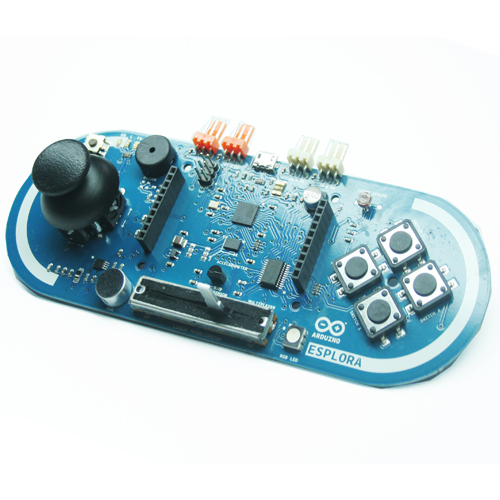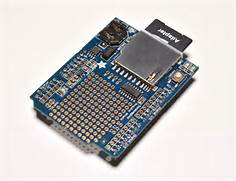Learn first-hand how to use Arduino, a tool that can transform the average desktop computer into a device that can interact with the physical world in a whole new way. Explore this cutting-edge technology with us and expand your software-writing horizons.



 Adafruit Wave Shield for Arduino Kit v.1.1
by
Adafruit Wave Shield for Arduino Kit v.1.1
by
 Adafruit Ultimate GPS Logger Shield
by
Adafruit Ultimate GPS Logger Shield
by
 Adafruit RGB LCD Shield Kit
by
Adafruit RGB LCD Shield Kit
by
 Adafruit CC3000 WiFi Shield with Onboard Ceramic Antenna
by
Adafruit CC3000 WiFi Shield with Onboard Ceramic Antenna
by
 Adafruit PN532 NFC/RFID Controller Shield for Arduino
by
Adafruit PN532 NFC/RFID Controller Shield for Arduino
by
 Adafruit Assembled Data Logging Shield for Arduino
by
Adafruit Assembled Data Logging Shield for Arduino
by
 Adafruit Ethernet Shield
by
Adafruit Ethernet Shield
by
 Adafruit 1.8" Color TFT Shield with MicroSD and Joystick
by
Adafruit 1.8" Color TFT Shield with MicroSD and Joystick
by
 Arduino interface shield for Scientific Probeware
by
Arduino interface shield for Scientific Probeware
by
 ADXL335 Board v2
by
ADXL335 Board v2
by
 Maxbotix Ultrasonic Rangefinder - LV-EZ1
by
Maxbotix Ultrasonic Rangefinder - LV-EZ1
by
 PIR (motion) sensor
by
PIR (motion) sensor
by
 Sensor Pak 900
by
Sensor Pak 900
by
 Membrane Matrix Keypad
by
Membrane Matrix Keypad
by
 Adafruit 9-DOF Absolute Orientation IMU Fusion Breakout - BNO055
Adafruit 9-DOF Absolute Orientation IMU Fusion Breakout - BNO055
 Reflective IR Sensor with 470 and 10K Resistors
Reflective IR Sensor with 470 and 10K Resistors
You can use the Vernier Arduino Shield to connect to the Factory's scientific probeware, or you can use the littleBits Arduino module, perfboards, and proto modules to build you own sensors, connect to their input modules, etc.